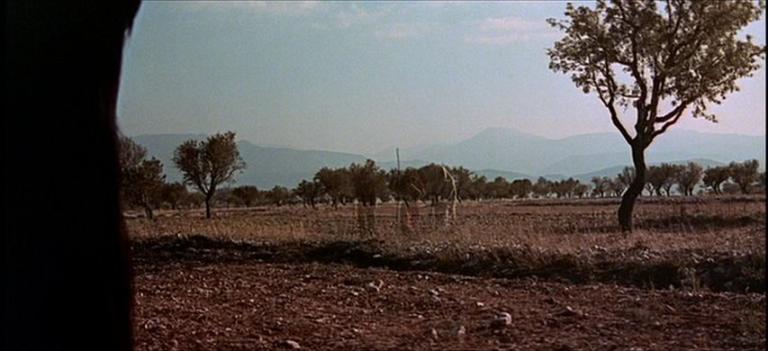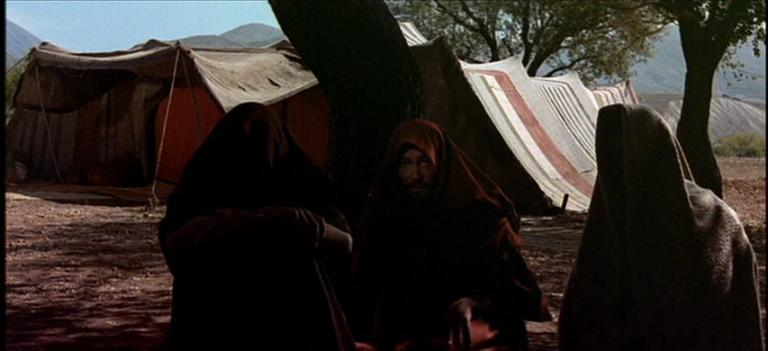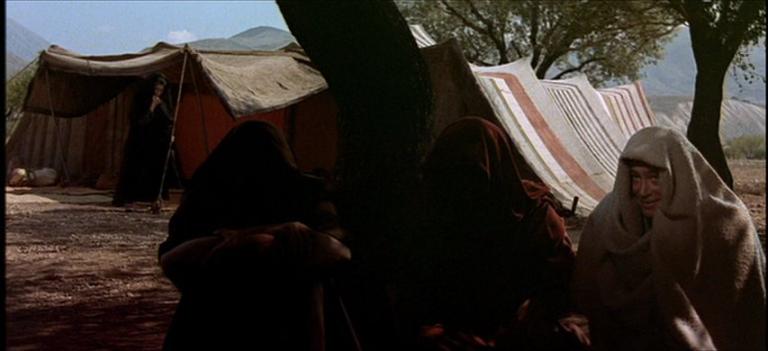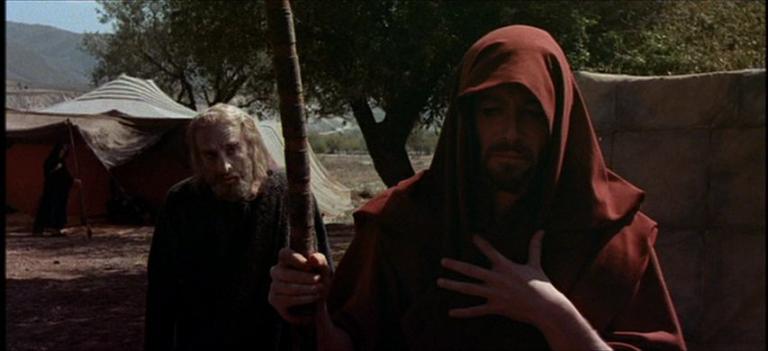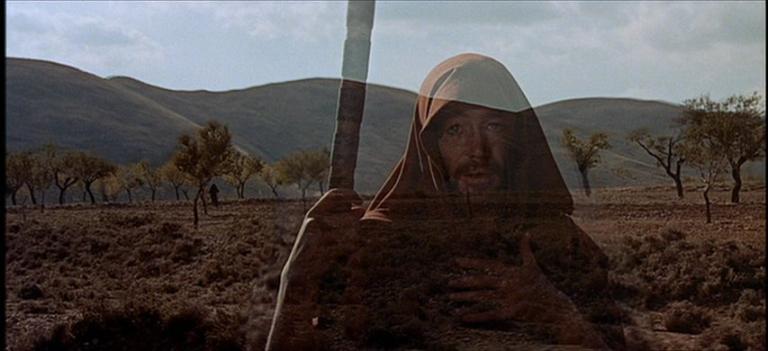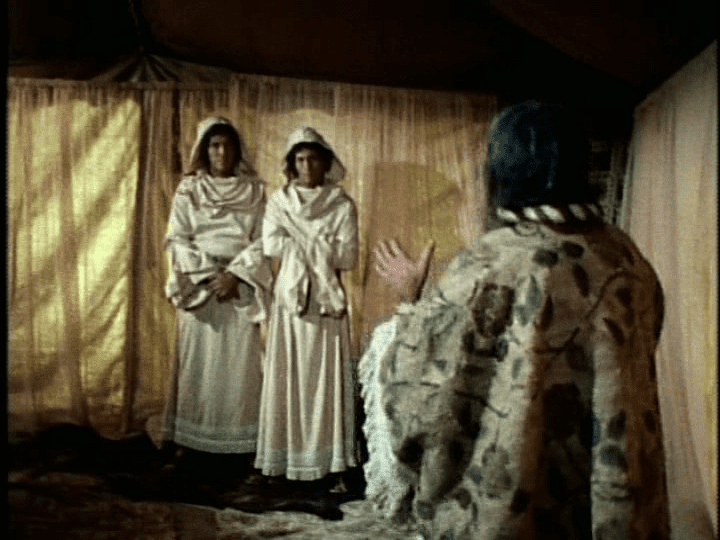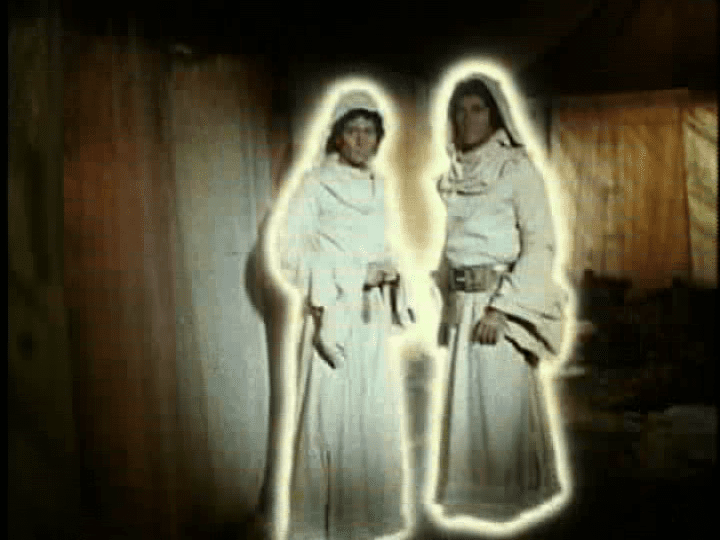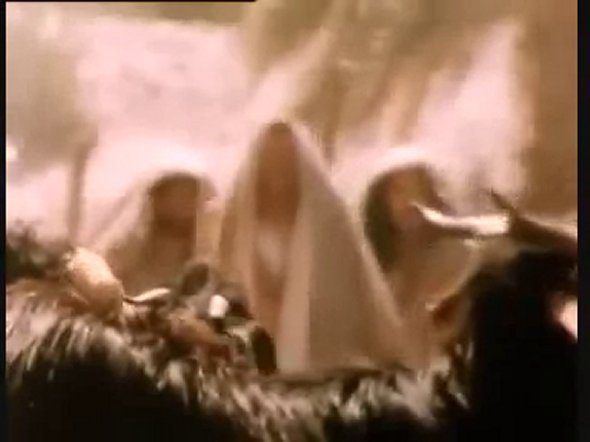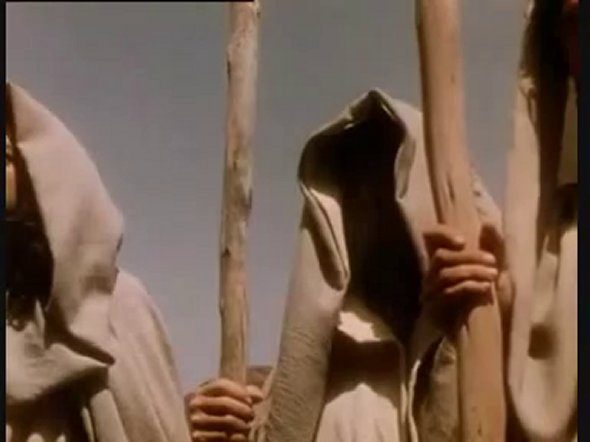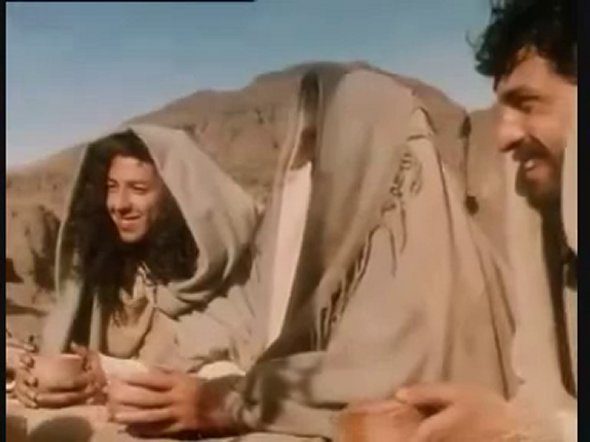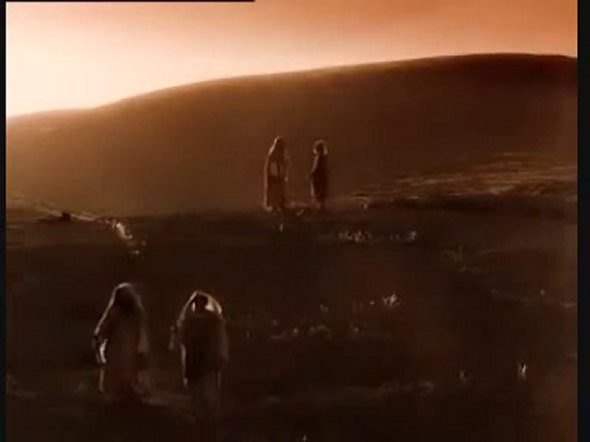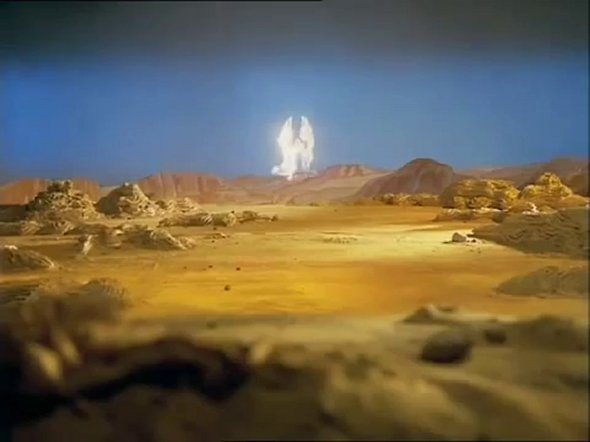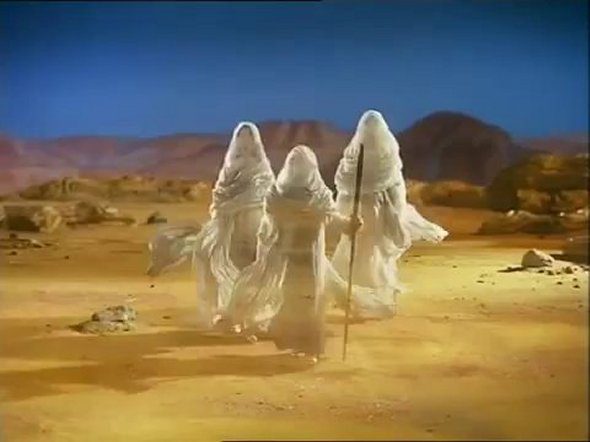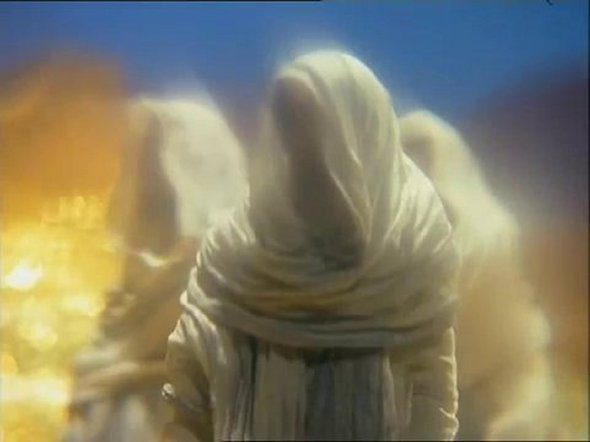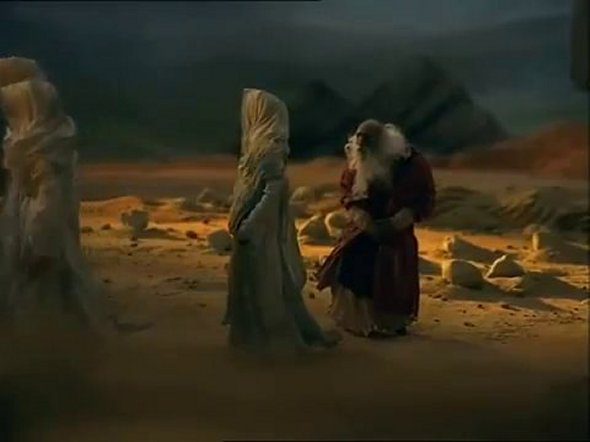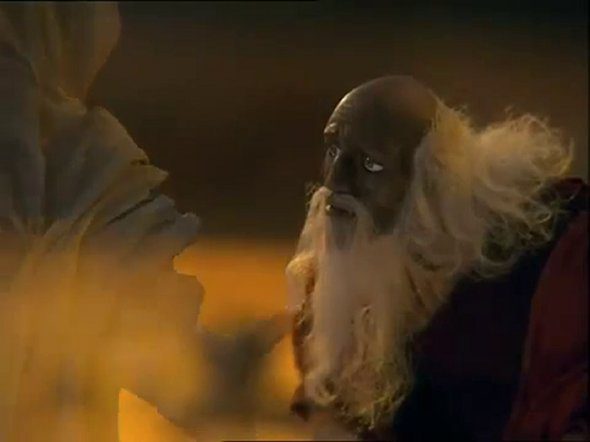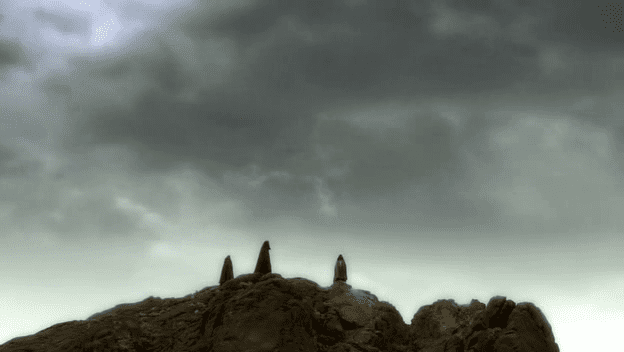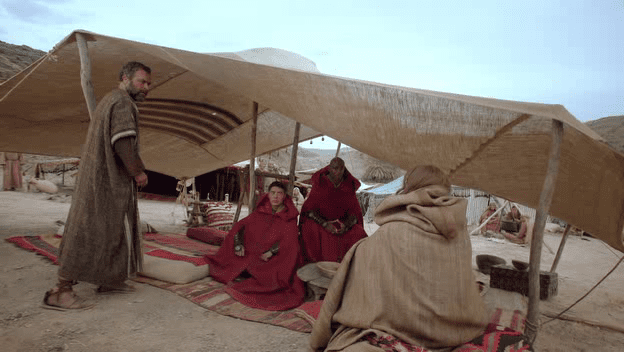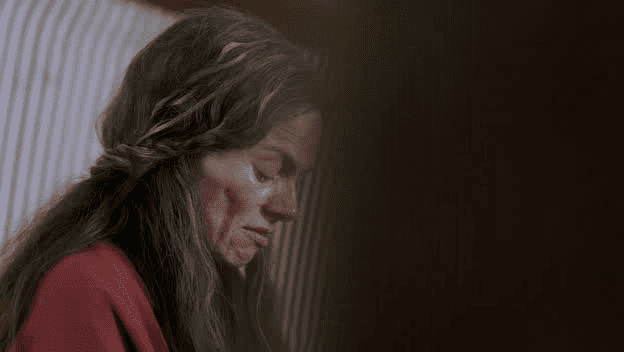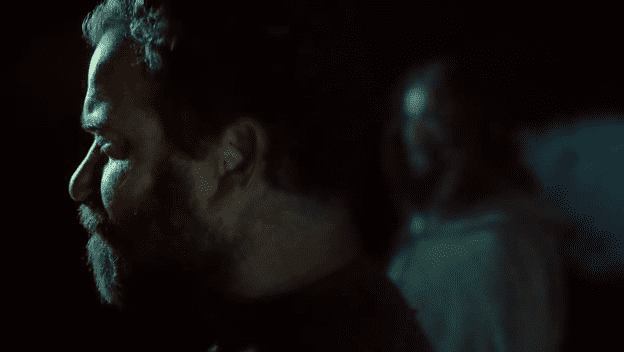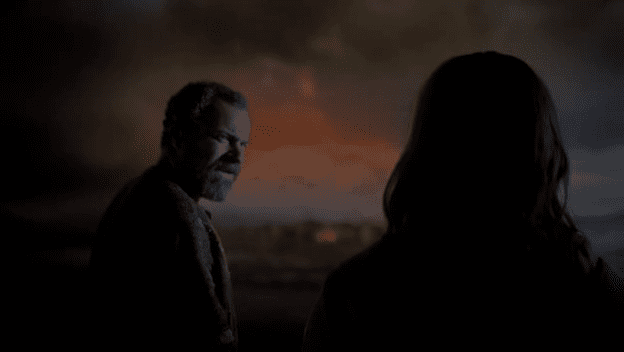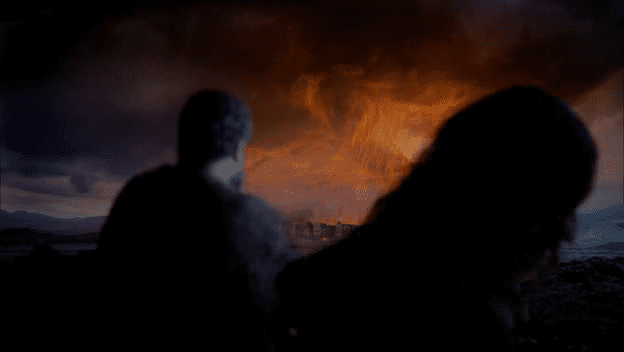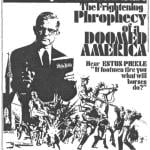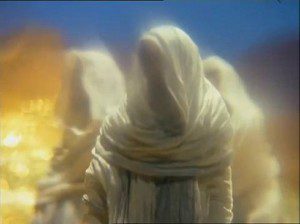 Fred Clark posted an item last night in which he expressed surprise that the story of Abraham and the three visitors in Genesis 18 is a lot stranger than he had thought. For one thing, Abraham and the visitors eat a meal that mixes meat and dairy, and would therefore be regarded as non-kosher by many of Abraham’s descendants. But, more crucially, Clark notes that one of the three visitors — who are often called “angels” — seems to be God himself. A walking, talking, eating God.
Fred Clark posted an item last night in which he expressed surprise that the story of Abraham and the three visitors in Genesis 18 is a lot stranger than he had thought. For one thing, Abraham and the visitors eat a meal that mixes meat and dairy, and would therefore be regarded as non-kosher by many of Abraham’s descendants. But, more crucially, Clark notes that one of the three visitors — who are often called “angels” — seems to be God himself. A walking, talking, eating God.
Personally, I’m surprised that Clark is surprised by that last bit, partly because it has always seemed clear to me that one of the three visitors is God himself. It’s certainly implicit in the text: God and Abraham “stand” together and discuss the fate of Sodom while the other men make their way to that city, and only two of the three visitors arrive in Sodom itself. Presumably God himself was the third visitor.
But beyond the text itself, nearly every single dramatized version of this story that I have seen has suggested that there was something different about one of the three visitors. So I had always assumed that that was a standard interpretation of the text, if not the standard interpretation of the text.
Here is how five different films and TV shows have dealt with this story.
First, The Bible: In the Beginning… (1966) creates an eerie, mysterious mood with its music as Abraham watches the visitors approach from a distance. As they walk towards the camera, they seem to fade in and out:
Finally, the visitors stand before Abraham, close enough that we can see that the one in the middle is played by Peter O’Toole; the faces of the others are hidden in shadow or behind their hoods:
The visitors sit down, and Peter O’Toole is still sitting in the middle:
But wait? What’s this? Peter O’Toole is also sitting on the left:
And he is also sitting on the right — and this time, he’s clean-shaven:
Finally the visitors get up to go, and the middle visitor pauses before saying, “Shall I hide from Abraham that thing which I do?”:
The middle visitor turns around to speak with Abraham (George C. Scott), and we see that the other two visitors have already walked a fair bit into the distance:
Abraham begins to plead with the middle visitor for the lives of the people of Sodom, and as they near the end of their negotiations, the middle visitor fades away:
After this, Abraham asks one last time if God might spare the city of Sodom for the sake of ten righteous men, and this time we hear the voice of the middle visitor on the soundtrack while the camera continues to look at the landscape, with the other two visitors walking even further into the distance.
There’s an interesting ambiguity to this sequence, as it seems to treat the middle visitor as somewhat special, yet it also blurs the line between the three visitors by getting one actor to play all three of them. (When the other two visitors walk through the streets of Sodom, the film does a very good job of cutting from one angle to another so that it alternates between the two O’Toole characters.)
The sequence is made even more ambiguous by the fact that at least one of these visitors speaks as though he was God himself, yet the voice of God throughout the rest of the movie is provided by director John Huston, not Peter O’Toole. So, even as the film suggests that the three visitors share a common identity, it also suggests that they are not to be identified with the God of the rest of the film.
So are the three visitors angels? Is one of them God? Are all of them God? The film takes a mysterious approach to a mysterious passage, but the clear use of the first person singular on the middle visitor’s part, when he negotiates with Abraham, does lend at least some support to the idea that he is uniquely divine.
The next four examples were all produced for television, starting with the NBC series Greatest Heroes of the Bible (1978). And what’s notable about this example is that it reduces the number of visitors from three to two — possibly to streamline things (after all, only two of the visitors went on to visit Sodom), but also, perhaps, to draw a sharper line between God and his messengers. In this dramatization, the two angels speak very clearly in the third person about what “the Lord God” will do:
And then, just to make things a little goofy, the angels seem to “beam out” of Abraham’s tent using a cheap 1970s special effect:
The next major depiction of this episode comes in Abraham (1993), one of the first films produced as part of The Bible Collection. This time, the angels are first seen out-of-focus, almost like a mirage appearing behind the livestock, but this is how the camera sees them, not how Abraham (Richard Harris) sees them:
When the visitors stand where Abraham can see them, the camera points up at them, and this time the face of the middle visitor is the only one we don’t see:
When the middle visitor calls Abraham by name, Abraham is startled to realize who these people are, and the camera comes in even tighter for a close-up on that particularly mysterious face-that-isn’t-there in the middle:
But, in keeping with the general tone of The Bible Collection, things don’t stay too reverent for long. The three visitors sit and talk to Abraham and his wife Sarah (Barbara Hershey), and when they comment on the fact that she laughed — and that she will have a son whose name means “laughter” — the two visitors whose faces we can see smile too. Does the middle visitor smile as well? Who knows:
This film, incidentally, is the only one I can think of that shows Abraham washing the visitors’ feet, which is perfectly in keeping with the text yet seems oddly demystifying compared to some of the other films. And instead of showing the visitors leave Abraham’s tent mere minutes after they arrived, the film dissolves from their initial conversation with Abraham and Sarah to their departure some time later. So the film allows for the possibility that their visit wasn’t necessarily a short one.
Finally, as the other two visitors leave for Sodom, the middle visitor stays and talks to Abraham:
The middle visitor himself begins to walk down the hill as Abraham negotiates for the lives of the people of Sodom. But when the camera cuts to Abraham’s point of view, the middle visitor is gone — and the rest of the conversation between God and Abraham consists of Abraham looking around himself and talking to a disembodied voice. (So a much greater chunk of this conversation takes place between Abraham and a disembodied voice than was the case in The Bible: In the Beginning…)
Then, a few years later, there was Testament: The Bible in Animation (1996). Here, the visitors seem to arrive from heaven like winged angels…
…before arriving on the ground, where they are initially semi-transparent, just like the visitors in The Bible: In the Beginning…:
When the visitors speak to Abraham, they never lose their ethereal quality, thanks to their bright white clothing and the Vaseline-on-the-lens camerawork:
When the visitors leave, one of them hangs back to talk to Abraham:
As Abraham begins his negotiations with God, the visitor he is speaking to fades from our sight:
Curiously, the other two angels fade from our sight too, shortly after this, even though we go on to see them again in the city of Sodom. So of the five films I am considering here, this one makes the least distinction between the three visitors.
Finally, there is the first episode of this year’s hit mini-series The Bible, which not only makes a distinction between one of the visitors and the others, but goes so far as to hint very strongly that this extra-special visitor might be Jesus himself.
This time, the sequence begins as Abraham hears a voice call his name, prompting him to look up at a nearby hill, where he sees three mysterious hooded figures:
The three figures then approach Abraham’s camp…
…and sit down at Abraham’s tent. There, they remove their hoods, but we can see only two of their faces:
Two points are worth noting about the visitors’ appearance here. First, they represent different ethnic groups, in a manner that almost suggests the traditional division of the Wise Men into Asian, African and European (aka descendants of Shem, Ham and Japheth). Second, the two visitors in red are wearing the exact same outfit that the angels in later episodes of The Bible will wear — which confirms their identification as angels — but the visitor in white is wearing something rather different.
The mini-series then does something rather clever — indeed, uniquely cinematic, compared to the other dramatizations being considered here — when Sarah overhears the prediction that she will bear a son.
Sarah is sitting inside a tent when she laughs, and in two of the shots that follow, we see the visitor in white walk between Sarah and the camera in a way that makes no spatial sense within the tent but hints at the visitor in white’s ability to transcend spatial boundaries; indeed, for all we know, Abraham is still talking to the visitor in white outside the tent while this figure speaks to Sarah inside the tent:
Genesis 18 is pretty clear that it is God himself who responds to Sarah’s laughter — but where the text has God ask Abraham why Sarah laughed, the mini-series has the visitor in white ask Sarah directly (though she never actually sees him; instead, like the Abraham played by Richard Harris in the 1993 film, she looks around as though she were addressing a disembodied voice and trying to locate its source).
Then, when Abraham asks where the two visitors in red are going, one of them looks at the visitor in white and waits for him to nod before turning back to Abraham and telling him that they are going to Sodom. So not only is the visitor in white different from the visitors in red, but he has some sort of authority over them:
After that, Abraham negotiates with the visitor in white for the lives of the people of Sodom while the two angels go and visit the city — and the visitor in white certainly looks like an out-of-focus Jesus:
We also get a look at the back of the visitor in white’s head:
And then, as Abraham weeps over the fate of the city, the visitor in white turns to the side and walks out of the frame — which is a surprisingly prosaic (dare I say pedestrian?) way to handle his departure from the scene, given the cinematic finesse the mini-series had used when Sarah laughed a few minutes earlier, and given how the other films that we’re looking at here have handled this visitor’s departure:
The idea that one of the visitors was Jesus himself is not original to this mini-series; Christians down through the years have speculated that Jesus may have appeared to people before the Incarnation, and that this may have been one of those occasions.
It is striking, though, to see Abraham weep over the fate of Sodom — possibly because it means losing contact with his nephew Lot more than for any other reason — while Jesus stands there and presides over the destruction of the city. How does this square with the weeping that Jesus does over other cities in the New Testament?
I can’t recall whether the New Testament section of the mini-series ever shows Jesus weeping over those other cities, but it certainly emphasizes his love and compassion — and so, in this as in other ways, the mini-series taps into the tension that exists between different parts of the Bible without necessarily finding a way to resolve that tension. (See also my comments on the “Israel! Israel! Israel!” scenes.)
In any case, as you can see here, there is a consistent thread running through filmed interpretations of this story from Genesis. The three visitors are all clearly at least angelic on some level, and one of them, it is strongly hinted, may be even more. How this is communicated varies from film to film, but the basic idea — that one of the visitors who predicted the birth of Isaac was also the God who discussed the fate of Sodom and Gomorrah with Abraham — seems to be pretty standard.


